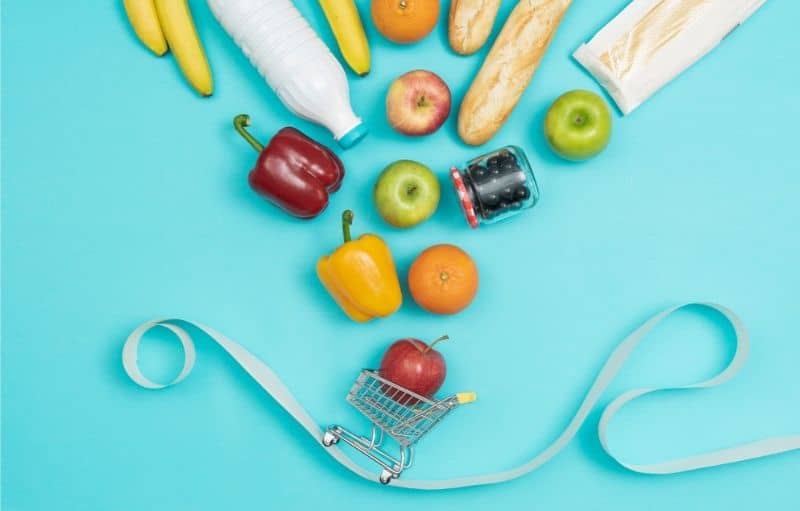Have you ever thought of how possible it is to whip through a week’s or months’ worth of food in just one or two hours during the weekend? Then read on to find out how to whittle down weeknight kitchen time to Z-Zero!
Budget meal planning is essential as it saves you so much money, time, and fuss. And while the goal seems hard to achieve, the plan is something we swear by.
These meal budget tips are a step-by-step, no-holds-barred, definitive guideline to getting control of your finances and reducing your expenses without sacrificing your lifestyle.
What is meal planning?
You may be wondering: what is meal planning? Well, meal planning is whatever way you organize and control your cooking, whether it is breakfast, lunch, or dinner.
It is a plan you make before shopping, and depending on your budget, you can plan your grocery list in advance.
It is one of those homemaking activities that moms love. Know your bounds, know your passions. and know how to navigate a budget.
Then, meal planning will become second-nature.
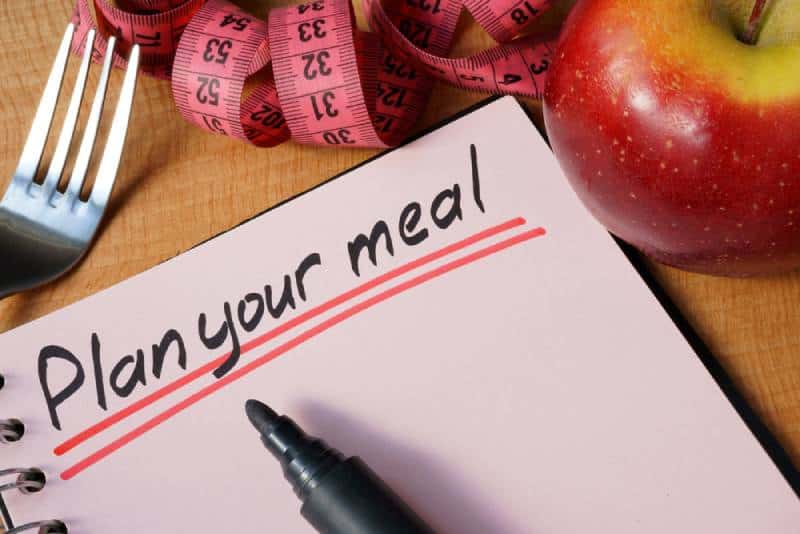
Budget meal planning is a personal thing and what works for me may not work for you, but the end remains the same: finding a system that is effective and enjoyable.
Save money on food with these surefire tips:
1. Pick a meal planning day
Most families have some down time every week.
You can pick a calm, Sunday evening as there is no work to be done that period, no extra activities, and the kids have no homework to rush through.
You can do it with your kids, discussing which meal plan works for you and your kids. So, what night works best for you?
2. Create a meal menu
- Every meal planner starts with written documentation.
- What is your approach to meal planning?
- Do you prefer to prepare meals ahead of time, just before the meal or a combination of both?
- Do you want to pick a day to cook meals for the entire week or month and store them in the freezer?
- Are there any special nutrition considerations for your family?
For example: you can freeze labeled packets of soups, stews, vegetables, fruits, etc., neatly, or tuck the dry, high shelf-life items away in the pantry or freezer.
RELATED: Vegetables and Fruit In Season By Month: When To Buy What
Flip through the pages of cookbooks on Amazon or other online sites to find recipes that are exciting. Assess the level of cooking skill required to make each recipe.
Also, make sure you have all the special cooking utensils for your recipes.
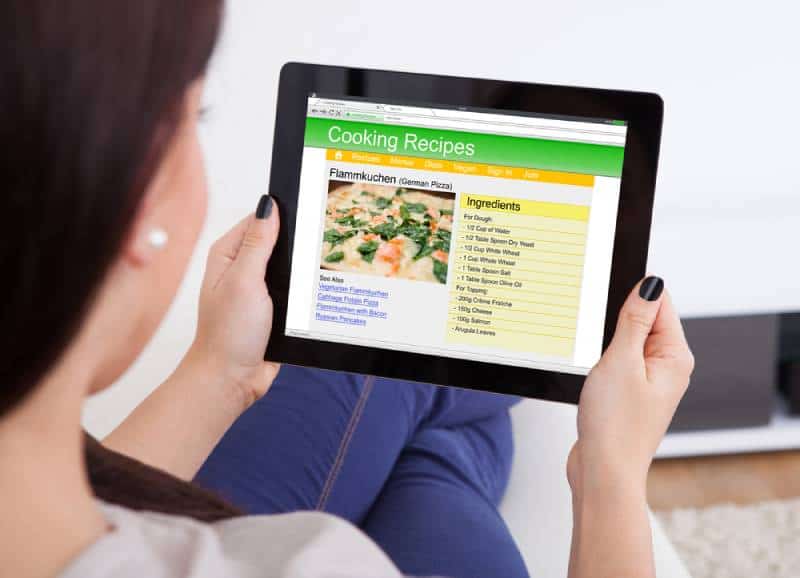
Identify which recipes you’ll make for breakfast, lunch, or dinner. There are several menu plans all over the web, all with varying degrees of success, and some more budget-friendly than others.
Write down your weekly meal plan on a planner form, downloadable from the internet.
Weekly meal planning ensures that you spend less on fast food and convenience meals that may be unhealthy.
3. Pick a shopping day and make a shopping list
Now that you have a meal menu, it’s time to make your shopping purposeful. Take a look at your menu and recipes and make a grocery list.
In a convenient place, keep a writing pad and pen, and record changes over time as you use up grocery items.
This way, you won’t forget anything when you hit the supermarket.
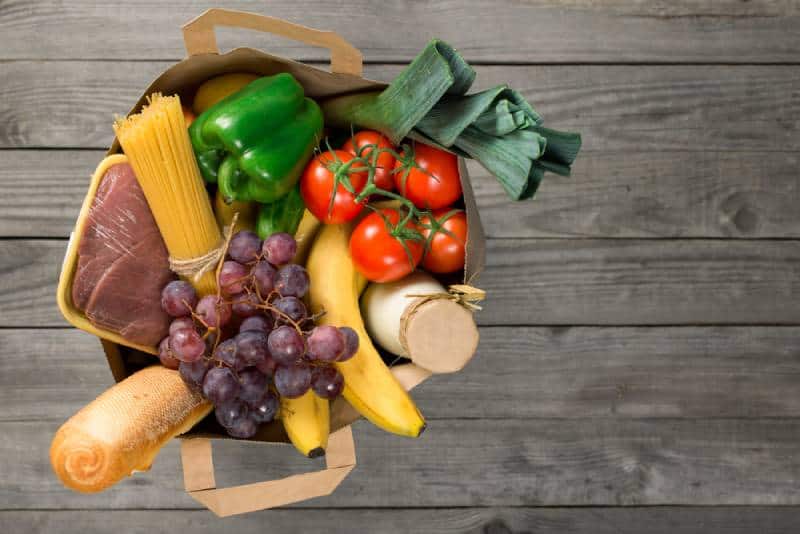
Again, there are meal planning apps and websites with printable records that help you create, save, and extract your ingredients.
Grocery shopping apps available on iOS or Android platforms include information on where to get the best deals on food prices in such supermarkets as Aldi.
For example, after you enter something in your shopping list, the app might suggest a supermarket that offers the best prices for those items.
Others allow you to sort your grocery shopping list into categories for easy shopping.
You can begin with a blank index card. List at least 7 meals that you’d be interested in cooking for the next week.
This may include some salad recipe, a soup, something with beans, a fish meal, a pasta meal or what most people call a “thunder bowl,” which usually comprises whole grains, grains, greens, vegetables, and eggs on top.
Cross off the meals when eaten.
4. Plan meals around food that is on sale
Be on the lookout for store flyers, newspaper inserts, and of course, online coupons. You may be amazed at the great bargains and discounts you’ll find.
Knowing if a dollar is off on chicken or canned legumes saves food money on your menu on those items you know that you’ll use up, reducing the possibility of food waste.

Buy food items that are on sale with slashed prices. Many stores have great deals on pork loin, skirt steak, and chicken thighs.
Don’t forget to make a mental picture of what you already have in your pantry or freezer as you browse for deals.
For instance, you may need to trade spinach for another leafy veggie or cheddar jack for cheddar cheese if that’s what’s available on discounted sales.
5. Prepare food soon as you return from the store
Start washing and chopping vegetables. Dice those carrots, shred blocks of cheese, get your olive oil out and stir-fry that zucchini or brown the sausage for pizza.
Bask in your own preparedness and meticulousness.
Bag those that need to be put in the fridge and label appropriately. This makes the cooking process a lot easier.
6. Achieve a budget meal with a well-stocked pantry
Check the expiry dates of the raw food items and ingredients you already have and the time of the month you’re in.
Which ones do you need to consume quickly?
Have lots of grains: rice, pasta, couscous, and barley are really cheap and can be used in a variety of recipes like stews and salads.

You can actively look for recipes that use these foods and associated ingredients.
Engage in backward meal planning so that you buy what’s on sale or shop as per “what’s already in the pantry.”
This is because while most new plans require beforehand planning; they are largely influenced by what you have eaten previously.
The result? Savings on certain food items, with pennies turned to pearls.
- Five food groups pantry list
Vegetables – keep a number of different canned tomatoes (crushed, diced, or whole stewed).
Use them to make stews, soups, sauces, casseroles, and more. Pick a bottle of your preferred spaghetti sauce.
Dried mushrooms are an excellent pantry item because they add a dash of flavor to your meals.
Fruits – raisins, dried apricots, dried cranberries, and other dried fruits add other fibrous food items ensuring that you’re loaded with dietary fiber.
They add a depth of flavor to your morning breakfast, midday salad, and dinner grains.
Milk and dairy products – dried milk is an excellent back-up food item to have in your pantry. You can use it in your coffee or tea.
Boxed milk is available in single-serving packs and is excellent for lunch boxes. Evaporated milk can be substituted for liquid milk in most recipes.
Protein foods – stock up the pantry on canned or dried lentils and black, garbanzo, pinto, cannellini, and kidney beans.
These legumes do a good job of delivering high-quality protein. You can toss them in salads, soups, stews, and other dishes.
Canned tuna, anchovies and sardines should be a pantry staple. They are a quick way to add protein, healthy oils/fats, and flavor to your meals.
Grains – keep a stack of oatmeal, buckwheat, and other whole-grain cereals in the pantry. Add some nuts and fresh berries for an extra boost.
Barley, farro, quinoa, and other grains are excellent staples for healthy meals that can be prepared on a slow cooker. Keep a number of rice variants on hand – long grain, short grain, basmati, and brown.
Let’s not forget pastas: spaghetti, macaroni, ziti, and penne make for an easy, quick-filling, family meal.
Give yourself an extra nutrition boost by stockpiling whole-grain pasta or legume-based pasta.
Oil and vinegar – extra-virgin olive oil is a multipurpose, heart-healthy option. Other oils like walnut, peanut, and sesame add a surge of flavor to meals.
Select varieties of vinegar such as cider, white, and balsamic as each imparts a unique flavor to your recipes.
Condiments – mustard, ketchup and mayo can be stored in the pantry until they are opened. Once you open them, store them in the fridge.
Stock – vegetable, beef and chicken broth are the basics of many recipes. Go for those that have low-sodium or contain no added salt.
Spices and herbs – these come in small containers, are always fresh, and have a long shelf-life.
Flax – flax and chia seeds deliver a good jolt of protein, fiber and omega-3 fatty acids. Add them to cereals, sauces, salads, and home-baked products.
If you’re buying whole flax seed, ensure that you grind it up before eating so that your system can absorb the nutrients.
7. Freezing food strategically to save time
The freezer is every mom’s best friend and is the friend of the future you. U
sing the freezer, you can make one pot consisting of a double or triple batch of almost everything.
Soup cooked and split into 2-3 batches are thrown in the freezer and in a month’s time, they’ll still be fresh and palatable. Great budget meal planning tip, right?
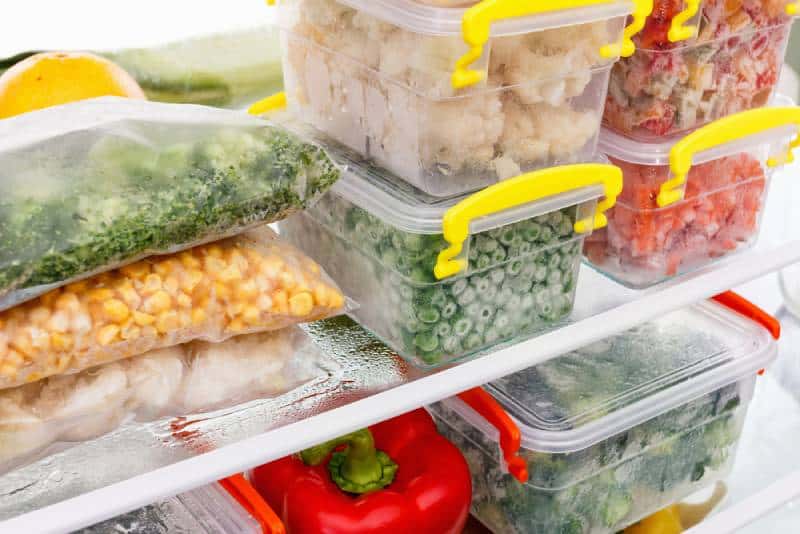
- Five food groups freezer list
To help you make sure that you don’t store food beyond their freshness levels, write dates on packages before storing in the freezer. Use the oldest first.
Vegetables – pick up some favorite frozen veggies. They are good sources of minerals, vitamins, and other nutrients.
Flash-freezing methods lock in food nutrients. Look for packages that don’t have sodium. And while you are the produce aisle of the farmers market, get some fresh herbs.
When you get home, fill ice cube trays up with diced herbs, top off the herbs with boiling water, and place in the freezer.
Add those frozen herbs to add a whiff of freshness to your meals.
Fruits – stash away frozen berries and other fruits in the freezer. These are great when you’re looking to add nutrition to the kid’s morning smoothie.
Milk and dairy products – put cheeses such as Parmesan into soups, stews, and pasta dishes.
Protein foods – stock up on salmon and other fatty fish to ensure that you have your healthy fat profile up.
Frozen lean meats and poultry also store well in the freezer. One pro meal planning tip is to ensure that you move it to the fridge before cooking in ample time to defrost.
Toss a variety of nuts in the freezer because this helps prevent them from spoiling. You can add those to cold cereal, salads, hot grains, and other dishes.
Grains – whole-grain corn tortillas freeze excellently and can be used for a quick breakfast fix, lunch, and dinner.
Can’t consume a loaf of bread fast enough after buying it fresh? Get into the habit of freezing part of the loaf and defrosting slices as you need them.
- Freezer cooking
- Don’t over-stuff the fridge
- Dumping meals
- Make 15-minute meals
8. The best menu plans avoid recipes that require special ingredients
At times, my food recipes demand the infusion of special ingredients which you may not have on hand.
Depending on the cost and size of the ingredient, you may opt to leave out the addition of a special ingredient and make do with the one you have at home.
Why? For one thing, you’re probably only going to use that ingredient once.
For another, it’s a good idea to experiment while cooking. Who knows? You might come up with a memorable dish in the end.

Plan on using leftovers
Be creative about how you use leftovers.
If you’ve made roast chicken with rice and vegetables for Tuesday night’s dinner, then it makes sense to make boneless chicken sandwiches for Wednesday’s lunch.
You may also opt to cook one or two big broths at the beginning of the week and eat them for lunch throughout the week. Either way, try to make your cooking perform double function.
I enjoy putting something extra from everything in my meal plan, which is why my food is always rich in nutrient essentials.
9. For a truly budget-friendly meal, consider going meatless at least once a week
While it can be challenging to serve healthy meals when you’re trying to save money, consider serving budget-friendly meatless meals once a week.
Boneless, meatless meals are based on beans, vegetables, whole grains, and lentils. This is one of the best tips for budget meal planning.
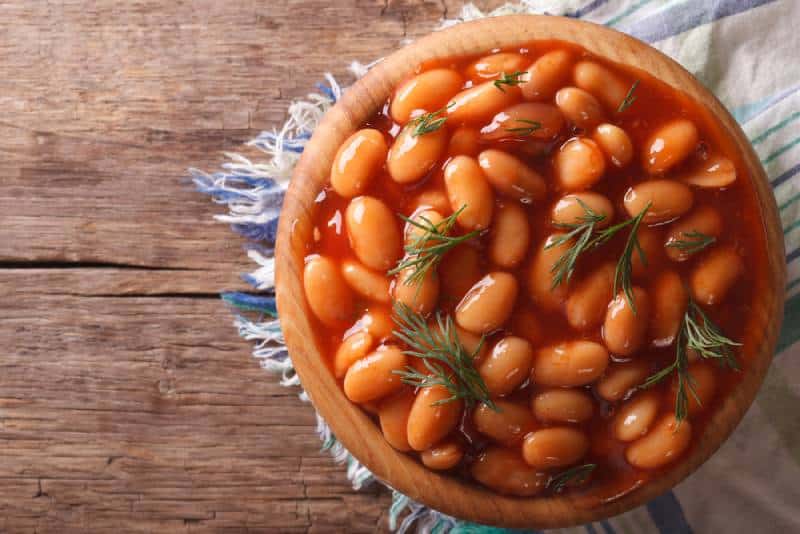
Plant-based proteins are less expensive and offer better health benefits than meat. They are rich in fiber, vitamins, and other vital nutrients.
Plant-based proteins also have less fat, fewer calories, tend to cause less weight and lower the risk of cardiovascular diseases.
Research shows that people who eat red meat or processed meat face a higher risk of death from heart disease, diabetes, and stroke.
Diets high in nuts, seeds, seafood, vegetables and fruits, also reduce the risk of death.
Emergency Extras (EE)
Get fruits – An apple or guava works just fine for a dinner side. Also, kids find it easier to cut up more types of fruit than types of veggies. Fruits are healthier than potato chips.
Peaches, berries, pears, and lemons are good sources of vitamin C, potassium, fiber and other vital vitamins and minerals.
You can stock up on canned fruits when they’re on sale and preserve fresh fruits at home.
Canned legumes like black beans, white beans, and navy beans are good to have on hand.
Canned soups and stews are quite nutritious and easy to store. Buy soups that are ready to heat as-is and do not require extra milk or water.
Canned pasta meals can be stored for a long time. However, they are often high in fat and calories; hence, you can find better brands in the natural food section of the grocery store or health food section of places like Aldi.
Dried fruits such as raisins and apricots are an excellent way of getting some fruit goodness into your emergency food pantry.
They have a long shelf life as long as you keep the containers sealed. With a dehydrator, you can dehydrate any kind of fruit at home.
Packaged whole-grain crackers, snack chips, and pretzels last longer than bread, making them good for your emergency food stash.
Look for crackers that are packed in small amounts, and don’t open packs until you need them. As long as the packaging remains intact, they should be good for at least 6 months.
Nuts and seeds should have a prestigious place in your pantry. Almonds, walnuts, pecans, and cashews have protein, fiber, and nutritious fats.
Packed nuts and seeds are awesome too; just keep a keen eye on the expiration dates, and keep the containers sealed.
Canned fish and meats like tuna and salmon are excellent sources of vitamins, minerals, proteins, and omega-3 fatty acids.
They’re available in can or foil pouches. Buy single servings so you don’t waste any fish. Stock up on sardines as they are rich in essential omega-3s.
And while fish can be a little boring, there are other options like canned clams, oysters, and crab, all of which are rich in protein and zinc, and can be stored for a very long time.
Want to take a break from fish? Canned ham, SPAM, chicken and canned sandwich spreads can be eaten with crackers as a flash meal.
10. Drink simply
I’m sure you remember how ordering beverages when you’re eating out runs up your dining bill. Same at home.
Drinks, whether alcoholic or non-alcoholic, ruin your budget and if you’re trying to eat at home and fully embrace a new meal plan, then reducing the cost of drinks is one way of achieving that.
Drinking as simply as possible is the ultimate solution.
And while I’d say drinking plain ol’ water is the best way to go, introducing a powdered drink mix can do the trick as its uber-cheap, feels fancier, and prompts your children to take in more fluids.
If you want to stock up on fancy drinks, buy them only when there is a special and they are on sale.
You can live a few weeks without food, but only a few days with no water. Everyone expects their water to be clean, safe, and free from germs.
Keep several, clean, tightly sealed bottles filled with water. You can also stock up on bottled water from the supermarket.

Treat water with chlorine as suggested by the American Red Cross, if you’re not sure of the cleanness of your water.
Consider getting a water purifier (not water filter).
Juice is economical when put in large bottles and does last for a while. However, you might have a problem after you open the bottles.
So, it’s best to put juice in small bottles or buy juice pouches. Bottles of electrolyte drink such as PowerAde and Gatorade can be included in your food pantry.
Shelf-stable milk and juice has been packaged so it does not need refrigeration until it is opened.
However, canned or boxed milk may not have the flavor you’re used to. It may also be savvy to choose plant milk such as rice, almond or soy milk.
11. Create a list of default side meals
Think salads. For example, sandwiches with a side salad, soup with a side salad, or protein over salad greens.
So when you’re out shopping, buy some salad mix. Frozen vegetables are awesome too.
Just purchase a big bag of mixed vegetables, and toss a handful in the microwave.
Sprinkle on a little seasoning or perhaps use peanut butter as a sauce and what you have is a side your kids will gobble up.
Be sure to stockpile items they like such as green beans, carrots, and peas. Don’t bother about having the same veggie type every night.
Just rest assured knowing that they are eating something healthy, right?
RELATED: Monthly Meal Planner to Help You Cut Costs and Save on Food
Like this article? Please share or pin it for later. You can also stay in the loop and follow us on Facebook, Instagram or Pinterest.

This may contain affiliate links. Please see our full disclosure for more info.

